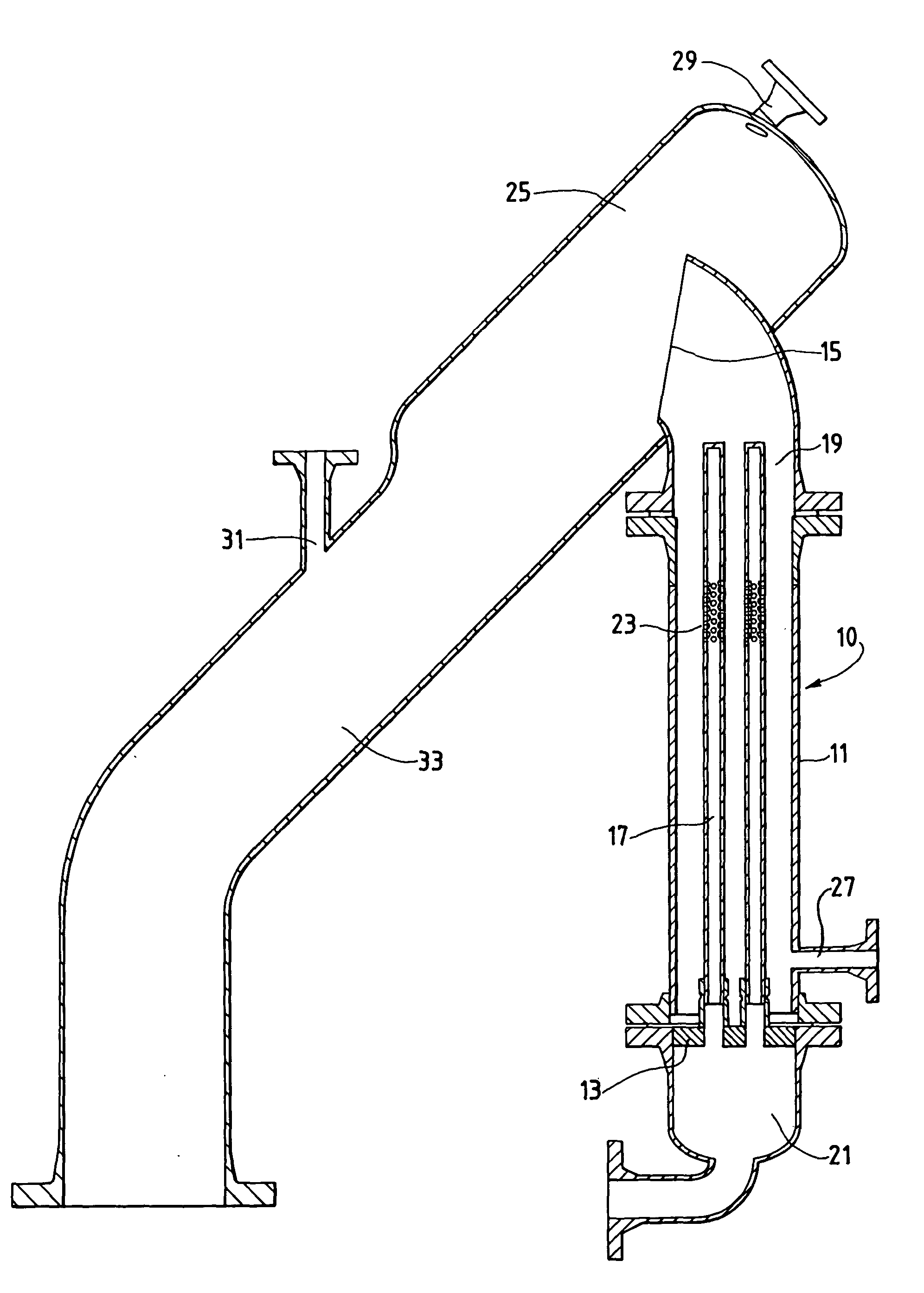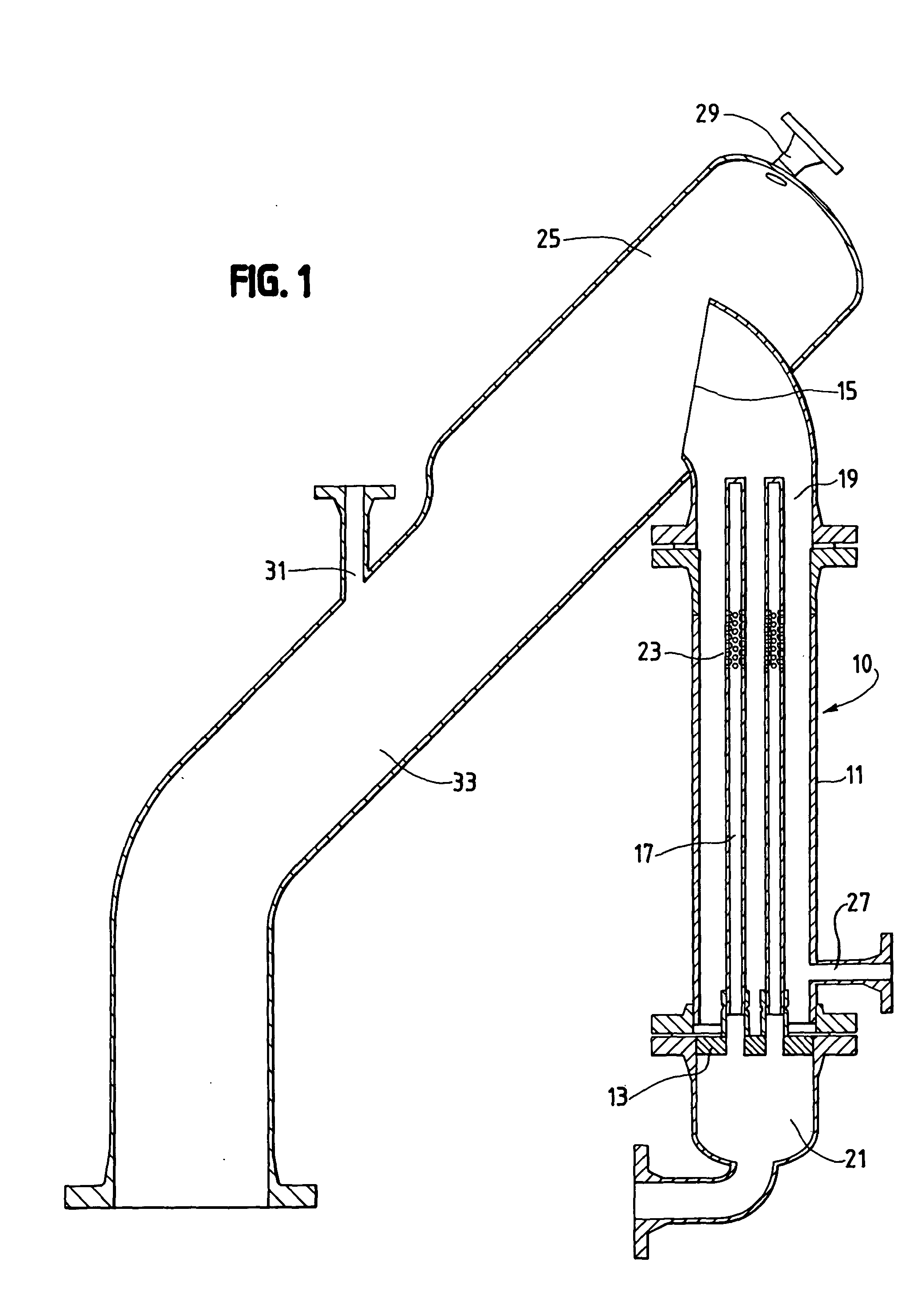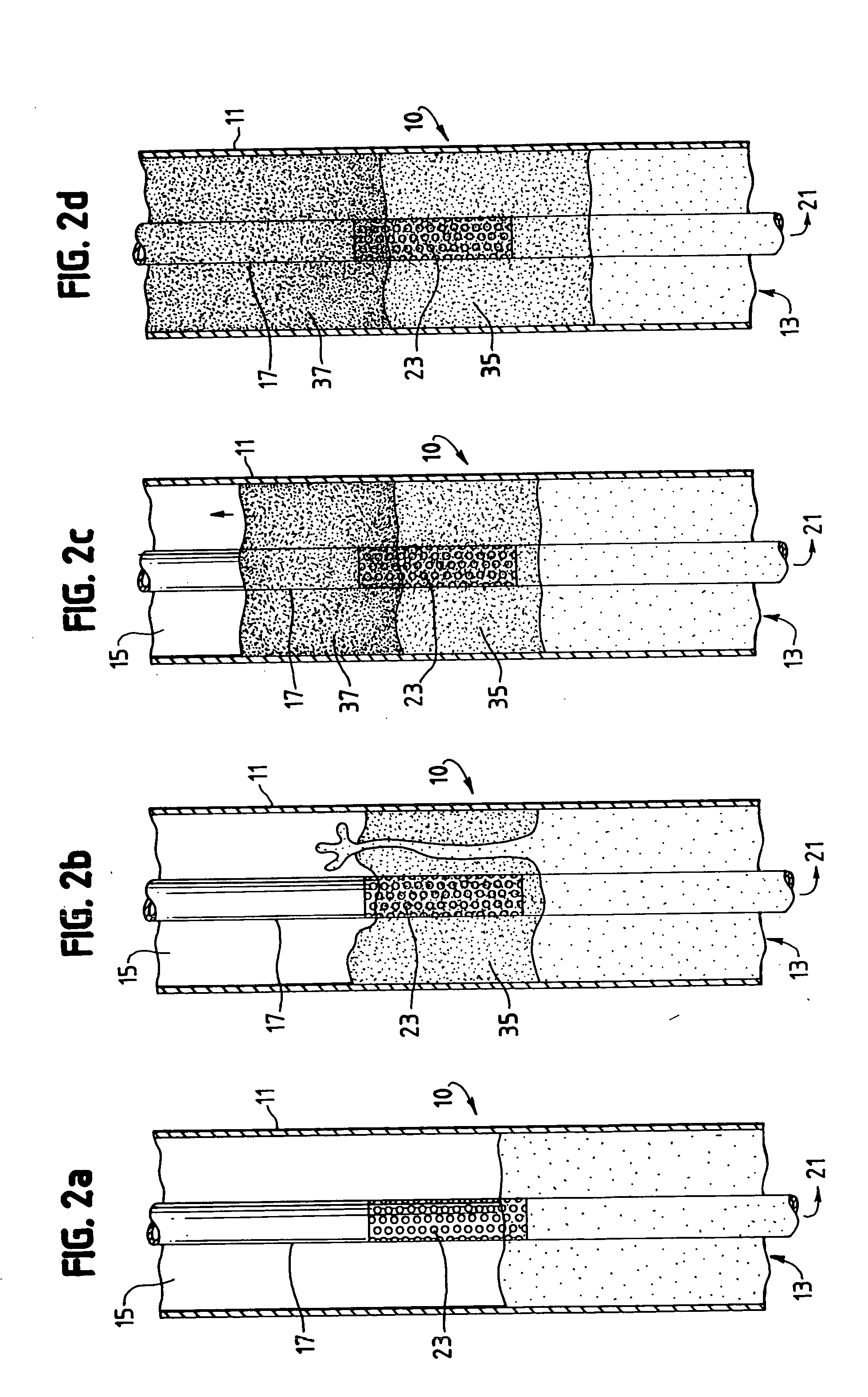Solid-liquid separation process
- Summary
- Abstract
- Description
- Claims
- Application Information
AI Technical Summary
Benefits of technology
Problems solved by technology
Method used
Image
Examples
example
[0052] Example 1 illustrates a process for the purification of para-xylene substantially in accordance with the present invention and FIG. 1. The example encompassed an 8-hour run in which the following parameters were measured or calculated from the measured variables: (1) the weight percent of para-xylene in the slurry feed; (2) the solid-liquid content of the slurry feed; (3) the temperature of the slurry feed; (4) the weight percent of para-xylene in the filtrate; (5) the solid-liquid content of the filtrate; (6) the temperature of the filtrate; (7) the weight percent of para-xylene in the cake (concentrated product); (8) the solid-liquid content of the cake; and (9) the temperature of the cake.
[0053] The slurry feed comprised mixed xylenes from a commercial, low temperature crystallizer. The pressure of the slurry feed entering the filter column was 210 psia at the end of the run. The feed rate of the slurry feed was held constant throughout the run at 700 lb / hr. The temperatu...
PUM
| Property | Measurement | Unit |
|---|---|---|
| Temperature | aaaaa | aaaaa |
| Temperature | aaaaa | aaaaa |
| Temperature | aaaaa | aaaaa |
Abstract
Description
Claims
Application Information
 Login to View More
Login to View More - Generate Ideas
- Intellectual Property
- Life Sciences
- Materials
- Tech Scout
- Unparalleled Data Quality
- Higher Quality Content
- 60% Fewer Hallucinations
Browse by: Latest US Patents, China's latest patents, Technical Efficacy Thesaurus, Application Domain, Technology Topic, Popular Technical Reports.
© 2025 PatSnap. All rights reserved.Legal|Privacy policy|Modern Slavery Act Transparency Statement|Sitemap|About US| Contact US: help@patsnap.com



